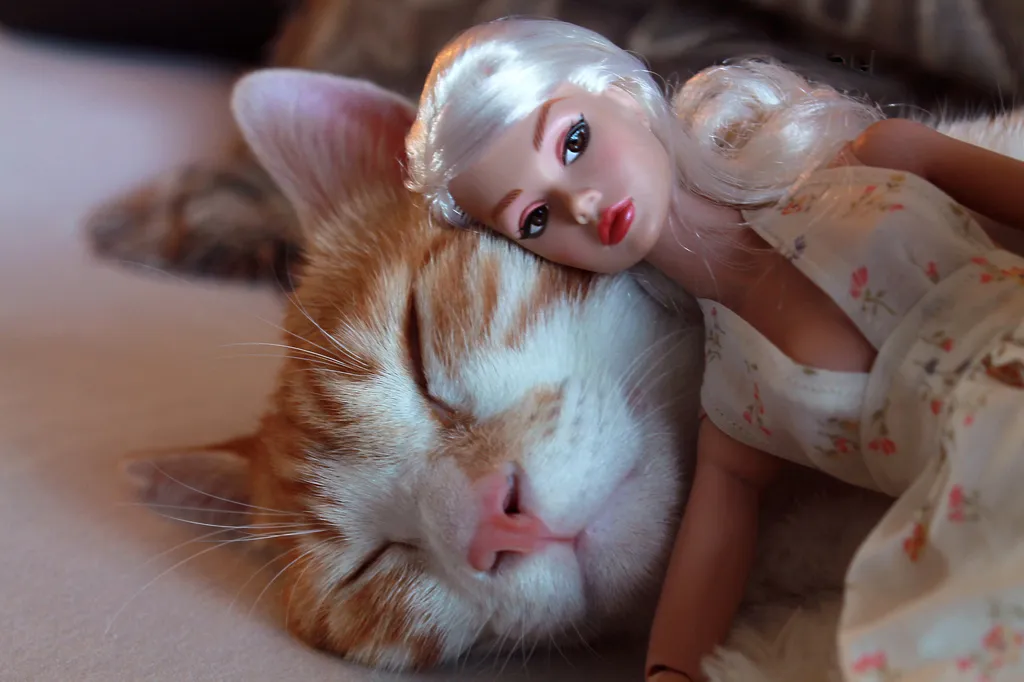Cats, like people, are individual. Everyone has a different character. One person may not like another. So it is with cats. It also happens that a cat may negatively perceive one member of the family: a child. In most cases, it is the opposite and pussies are happy to pet the baby, but there are exceptions.
Sometimes you can hear from “good” acquaintances ridiculous stories about how cats kill children - suffocate, taking revenge on the owners for neglect. And, as a consequence, from such stories the owners begin to think about how their pet (-s) will behave when a child appears in the house. Some even get rid of their pets. But everyone suffers. And the owners, and the animal, which is strongly attached to them and to the house, and, oddly enough, the baby itself. After all, cats emanates an incredible wave of positivity and joy, which he never had time to learn.
How do you make a child and a cat get along?
Here comes a long-awaited moment for any family - the arrival of a little miracle. But for your cat it may not be a happy event, but rather a great stress. That’s why it’s important to take their meeting seriously. It will be better if at first you control their contact and not leave the cat alone with the baby.
From the first day on, you should allow the cat to sniff the baby and his things: clothes, diapers and so on. This reflex is inherent in nature. She can get used to its smell. Perhaps not right away. When the cat understands that nothing is threatening it will be much calmer.
It’s a shame if your baby develops allergies. As a rule, it is cat fur that is very allergenic. But you should not panic prematurely. In such a case, you should consult a doctor - it may be a temporary reaction and it can be avoided if you reduce the amount of contact between the baby and the cat.

You should be especially vigilant when your child gets older and starts to move around on his or her own. This is when cats can become aggressive toward your baby. After all, crawling or running baby, trying to grab the cat by the tail or just to touch it, is a new and incomprehensible creature for him. During this period, parents often complain about the aggression of the most peaceful kitty.
Don’t forget to give the cat an antihistamine. Be sure to thoroughly wash toys and things that may have been in contact with the cat, because all young children learn this world through their “mouth.” Put the cat tray and bowl away where the cat can easily use it and the baby can’t get to it.
Also, don’t forget that sometimes it’s not just the baby you have to keep safe. It can be hard on your pet, too. Teach your child from childhood that torturing and hurting animals is not allowed. Show sternness if you see that the baby is torturing a cat. After all, the animal is not a toy. Try to create a “rescue” places, a nook where the cat can rest and take a sweet nap.
Acquiring a cat and a baby
If you’re just thinking about getting a cat, you may want to wait until your child becomes conscious of animals. And if you give them a kitten, the odds are very high that they will become friends.
When choosing a fluffy pet, note that such beauties as Burmese and Siamese are extremely jealous and if at first you will pay a lot of attention to him, and then switch to the baby, expect reciprocation. It is possible that they will be offended or even retaliate. Therefore, do not forget to give the cat of this breed a lot of affection, of course, after the baby.
For a too young child, you should not buy cats of breeds such as British, Scottish or Sphinx. They require extra care. And then, to keep such an animal, you need to know a lot of nuances. For example, sphynxes are prone to colds, and the British can get sick often.
However, phlegmatic Persians are great with children. Due to the laziness of their feline nature, they allow children to squeeze and rub them as they please.
And finally, the most important rule: the care of the cat must be with the child. The more involved he will be, the more he will love and appreciate it. Over time, the cat will begin to see him as his little master and will love him.